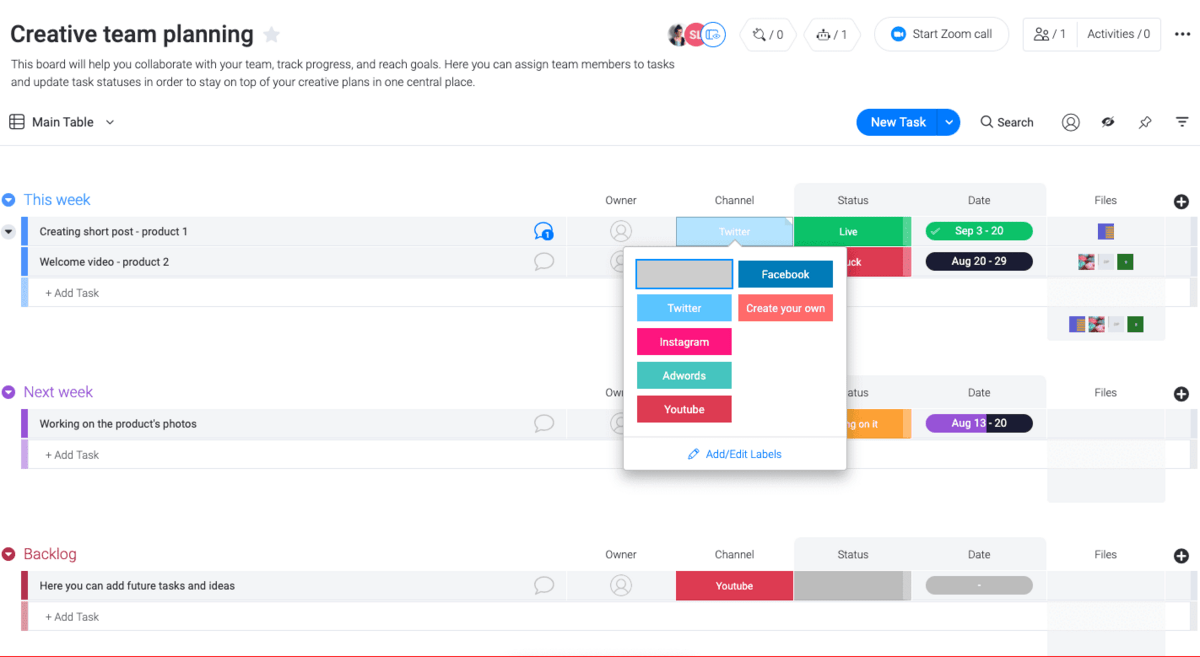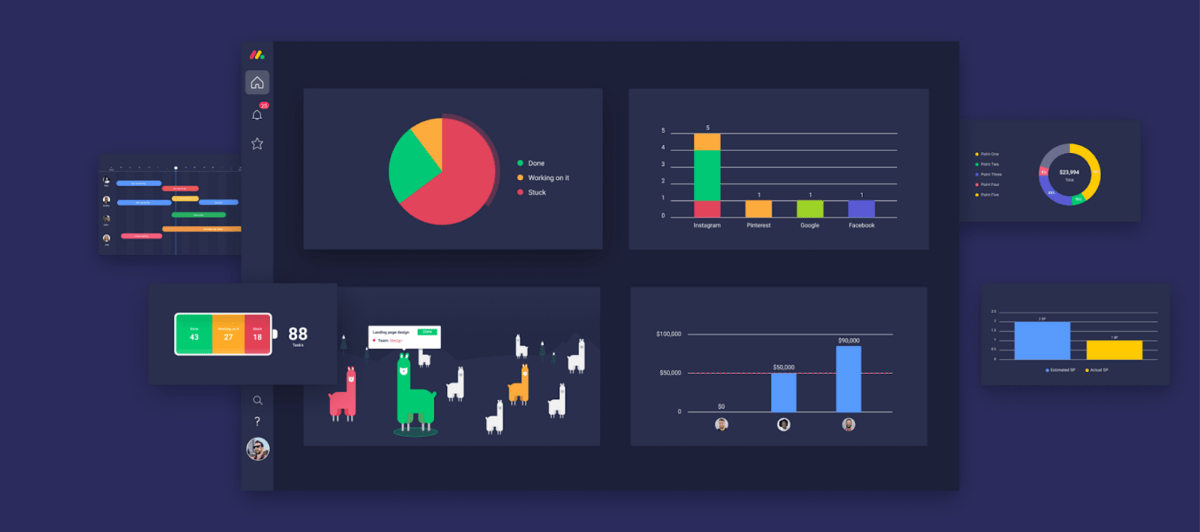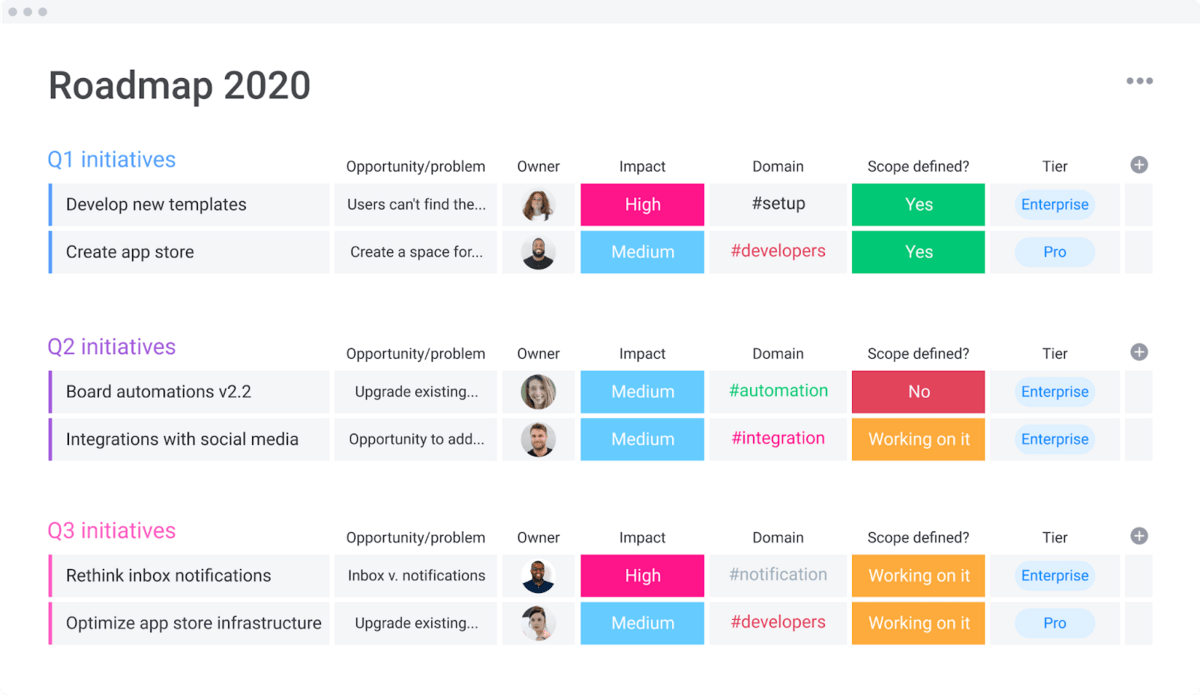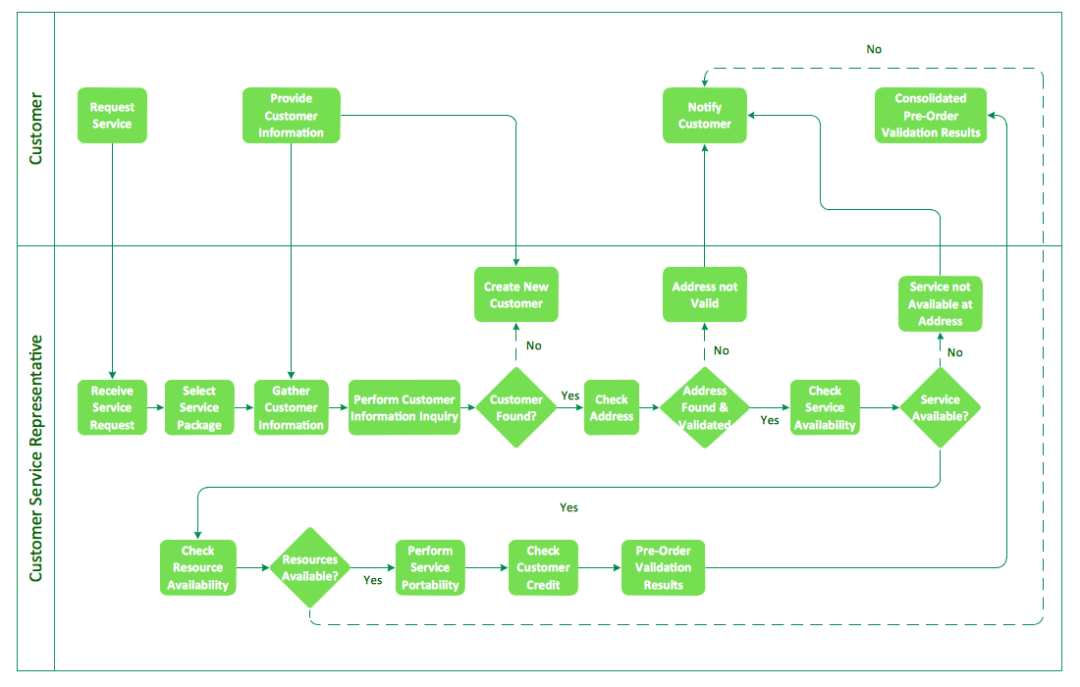What is a process flow? A simple yet complete guide for 2021
Blog: Monday Project Management Blog
Processes can make or break your business.
An inefficient process can slow down your organization to the point where you’re losing revenue — tons of it.
On the other hand, the right process can become a true competitive advantage, helping you achieve hyper-efficiency.
The question is: how can you turn a “mediocre” process into a “winner”?
It all starts with process flows.
A business process flow helps you break down all the components of a process and identify optimization opportunities with more ease.
Today, we’ll show you everything you need to know about process flows, starting with a basic question.
What is a process flow?
A business process flow is a sequential representation of a process and its components, including operations, timelines, people involved, and resources needed.
The main objective of process flows is to help you standardize and optimize your processes and help your team better understand how your business works.
Typically, a process flow chart looks something like this:

As you can see, they look pretty straightforward. But are process flows really that important?
Well, let’s find out.
What is the value of creating a process flow?
Some of the top benefits of designing a process flow include:
- Standardize your processes: standardization provides employees an established, time-proven process to use, among other benefits.
- Maximize resources: once you identify a process’s components, it’s easier to distribute resources for maximum performance.
- Improve your processes: once the components “make sense” together, the next step is to improve them. You can detect opportunity gaps and make the best out of them.
- Train your employees: new and established employees can benefit from a process flow. They will understand and internalize the whole process and get flexible enough for changes in the future.
- Mitigate risks: process flows help you detect and prevent risks more effectively.
- Increase organization-wide transparency: Every person in your organization gets clear insights about what you’re doing and how.
Now let’s explore the actual steps to create a process flow in the real world.
How do you document a process flow?
Now that you understand what process flows are and why they matter, the question becomes: how can you document your process flows?
Let’s cover a simple 9-step process.
1. Name the process
Try to use a descriptive name that identifies essential aspects related to the process. And, of course, don’t forget to use “naming conventions.”
2. Define the scope
We can define the scope of a process by answering 2 simple questions:
- What should you include and exclude?
- Where do the boundaries of the process begin and end?
This part can be tricky and may require more than one person to define it.
3. Define the primary process’s objective
You need to understand what, exactly, the objective of the process is. Why does it exist? What would be missing if it isn’t there?
A lot of common problems begin here. Here’s where you can find duplicity.
Most of the time, fixing this issue can produce huge benefits almost overnight.
4. Identify key inputs
A key process input variable (KPIV) refers to the different factors that can cause an impact during the production process in the input phase.
Some examples of KPIVs can be energy, water, and time.
The importance of KPIVs is that once you identify them, you can design statistical experiments that reveal optimal values for each factor so that you can achieve the desired output quality.
5. Identify key outputs
A key process output variable (KPOV) refers to the different factors that can cause an impact during the production process in the output phase. Therefore, they are affected by your KPIVs.
Some examples of KPOVs can be profit, the number of sales, and complaints.
KPOVs are on the other side of the statistical experiments you can design to optimize your process.
6. Structure the operations needed
Process structure determines how you should design processes in relation to the resources needed, as well as their key characteristics.
The structure of a process may involve several business divisions and providers.
7. Assign responsibilities
Once you’ve defined the sequential order of your operations, it’s time to define who’ll be doing what.
Just keep in mind that assigning responsibilities and roles in a process flow is no easy task, but it’s one of the most critical.
Having transparent and public process flows can help you better coordinate workflows and team responsibilities. This way, every person will have a total understanding of what, exactly, is expected from them.
8. Add control points
Control points “block” the implementation of sequential processes if the result of the work performed isn’t appropriately produced or doesn’t meet the requirements.
In other words, you can install “security doors” in your process flow diagram that stop the flow until it meets certain conditions. This approach is especially crucial in delicate or dangerous processes.
9. Represent the business process visually
Finally, you should represent all the previous documentation in a visual process flow chart so that every team member can visualize each business process in a more simple way.
5 major obstacles of process flow design and management (plus how to overcome them)
At this point, you already understand the basics about process flows, but we can’t finish this guide without including obstacles you may face in the process.
Here are 5 common obstacles involved with process flows and how to overcome them:
1. The process isn’t clearly defined
Having your entire team on the same page is crucial in moving your business forward.
In an ideal scenario, everyone involved in a process should have the same understanding of that process.
That’s why you must clearly define every element in your process from the start. Otherwise, you’ll deal with serious mistakes and misunderstandings later.
How can you solve this problem?
In a word, visuals.
Visuals help you define processes and communicate them better. Visuals are practical, objective, and clear to everyone.
For example, with monday.com, everything is visual and intuitive. People can see how things work together, affect each other, and flow.
With vivid colors and interactive features, monday.com’s interface makes it easier for your team to standardize any type of process.

2. You’re using a decentralized workspace
The pandemic caused by COVID-19 changed the way organizations work forever.
Roughly 8 out of 10 CEOs agree that remote work has come to stay.
Even as restrictions lift and workers return to the office, companies are looking for flexible workplace solutions as a way to “de-densify“ their existing office space.
But remote work comes with some challenges.
First, you must learn to work together from different places.
Processes need to adapt, too.
How could you control a project with multiple processes taking place simultaneously while your team is working from many different places?
Without a centralized workplace, the task becomes nearly impossible. The right platform can provide that needed centralization, even if your team works all over the world.
For example, with monday.com, you can bring in your entire team from the start, integrate your favorite tools and apps, and centralize your entire communication into one place.

Besides, monday.com helps you organize processes by name, objective, and people involved with just a few clicks.
You can create and manage teams, assignments, or even departments in a visual, beautiful way.
Imagine having your entire organization aligned and working seamlessly, even if they are all in different places.
Or managing your entire organization from a single place, including communication, data, deadlines, progress, and reports.
That’s all possible with monday.com.
3. You’re starting from scratch
Starting from scratch every time you want to design a new process flow can lead to inconsistencies and inefficiencies.
Instead, you should look for a platform that helps you standardize not only your processes but also process creation.
For example, with monday.com, you get access to prebuilt templates you can use to streamline any type of workflow in any industry.

These templates are ready to use.
You only need to fill them with your organization’s information, and you’re ready to go.
This makes process design and management way easier, as you’ll never need to start from scratch again.
4. You haven’t set solid communication channels
Lack of communication is one of the most critical problems in any business. If you don’t solve it soon enough, it can permanently hurt your entire organization in the long run.
Lack of communication affects your processes in multiple ways by causing:
- A lack of accountability
- Individualism
- A lack of transparency
- Misunderstandings
- A lack of productivity
And much more.
The best way to solve this problem is, again, by centralizing your communication into a single place.
For example, with monday.com, you get access to multiple features that make it easier for your team to communicate more efficiently, even in a remote environment.
monday.com has its own set of communication channels already built-in, but you can also integrate several tools and apps, like Slack and Zoom.
Other important communication features include:
- Video conferencing
- Instant messaging
- Tag-based messaging
- In-context notifications
- File sharing
And many more.
To get a more thorough overview of how monday.com’s communication features work, we suggest you watch this short video:
5. You aren’t measuring performance
Want to turn mediocrity into excellence?
Start measuring.
Measuring the performance of your processes helps you spot potential issues and optimize them continuously.
Processes are never “done.”
You should adopt a continuous process improvement philosophy that helps you achieve your highest level of performance.
To do that, you need the right platform.
For example, with monday.com, you get access to fully customizable reporting dashboards so you can make sense of your data and get valuable insights to improve your processes.

monday.com is all about measuring.
We provide you with a robust set of features for tracking, measuring, and reporting everything — literally.
With monday.com, you can measure:
- Effectiveness
- Alignment
- Reliability
- Cycle time
- Costs
- Efficiency
- Productivity
- Compliance
And much more.
Now, what can you do with that information?
You can create a workflow diagram, table, board, calendar, dashboard, and more.
You can also compare years, cycles, or performance and detect opportunity spots.
With monday.com, measuring and optimizing the performance of any process is pretty straightforward.
How to standardize your organization’s processes with monday.com
One of the most prominent mistakes organizations make when designing their process flows is using the wrong platform.
And, at this point, you’re probably wondering whether monday.com is the right one.
So, let’s quickly cover how monday.com can make the job way more manageable. This way, you’ll be able to make a more informed decision.
Let’s start with the basics.
What is monday.com?

monday.com is a Work Operating System (Work OS). That is, a powerful platform for collaborative work that helps organizations build custom digital workspaces to work more efficiently.
It’s a simple and intuitive platform for teams looking to shape workflows, adjust shifting needs, foster transparency, connect collaboratively, and stop doing manual grunt work.
Why monday.com?
At monday.com, you get access to everything you need to design, manage, and streamline any type of process, no matter how complex.
Our platform allows you to create custom apps and software for collaborative work, even for non-devs.
Besides, some of the top monday.com’s features include:
- 250,000+ automations
- Full customizations
- Advanced reporting dashboards
- Enterprise-level security
- Project and team management
And many more.
To get a better understanding of everything we offer at monday.com, we suggest you read our product overview page.
Standardizing your processes with monday.com
At monday.com, you get access to more than 200 templates. All of them are fully customizable, and you can use them to streamline any process much faster.
This is how they look:

Some of our most popular templates include:
- Marketing plan: track all of your marketing initiatives and strategies together with your team. Plan your business goals, budgets, and marketing campaigns from A–Z in one workspace.
- Work calendar: assign due dates and add timelines, so everyone on the team gets work done on time, every time.
- CRM: add leads, control the sales flow, manage your contacts, predict income, and detect where you should focus your efforts.
- A/B Testing: plan and analyze your subsequent A/B testing, keep all your team members aligned with the results, and make decisions based on reliable data.
The success of your business depends on your processes
No matter how good your products or services are. Nor the size of your organization. Not even how many customers you have.
If your processes are inefficient, sooner or later, you’ll lose.
The sum of all your processes makes up the operating system that makes your business work.
Hopefully, now you have enough information to not only design your process flows but also to optimize them more effectively.
And if you’re looking for a platform that makes you more efficient, productive, and effective at the same time, then monday.com might be the right choice.
We suggest you try out our advanced project management template. It’s the best way to start designing your process flows on the right foot.
The post What is a process flow? A simple yet complete guide for 2021 appeared first on monday.com Blog.
Leave a Comment
You must be logged in to post a comment.








